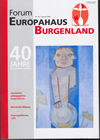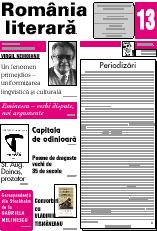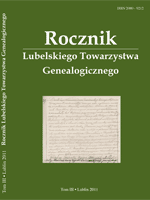
All the time the Tisza
Folyton a Tisza
Keywords: river - control - water pollution - wilderness - river sanctuaries
More...
Keywords: river - control - water pollution - wilderness - river sanctuaries
More...
Keywords: feminism - Biennale of Venice - art and gender
More...
Svejk, Heidegger and Hölderlin in Prague
More...
Keywords: chickens - sex - inheritance
More...
Impressions about present-day Germany, German culture and German mentality. Experiences with translations and translators.
More...
Denn sie dürfen nicht, was sie sollen… 40 Jahre pädagogische Konjunkturen (Marianne Gronemeyer) Paulo Freire und befreiende Bildung im 21. Jahrhundert (Andreas Novy) Globales Lernen – hart an der Grenze ( Hans Göttel) Fröhlichkeit und Dialog (Gerald Faschingeder) Die Güte des gebildeten Volkes (Hans Göttel) Die Geschichte von einer Schildkröte (Josef Pampalk) „Wie in einem Spiegel: Europäerinnen“ Ein Biographie-Workshop für Frauen (Peter Malina und Christine Popovits-Schwarz ) Kursprogramm der „werkstätte für kunst im leben“ (Ilse Hirschmann) Frauenfenster in die globalisierte Welt (Elfriede Lenz) Politische Bildung publik gemacht Die Österreichische Gesellschaft für Politische Bildung veröffentlicht einen Veranstaltungskalender mit geförderten Projekten Gestürmte Festung Europa (Peter Winkler) Kunst für das Europahaus Termine
More...
Keywords: Eminescu; Romance; Cezar Paul Badescu; Dilema; Romanian culture; argument; Lovinescu; Marian Munteanu; national poet;
The author presents his impressions about an article on Eminescu in Dilema no.265 (27 Feb. - 5 March 1998). He also talks about Cezar Paul Badescu's anthology which is a must in order to better understand the evolution of the Romanian culture.
More...
Keywords: Securitate; secret service; Pavel Corut; Ion Iliescu; Adrian Nastase; Vadim Tudor; PDSR; NATO; Ceausescu;
An article written by Mircea Mihãies in his permanent column "Contrafort". The article deals with the inflation of secret services in Romania in the year 2000.
More...
Keywords: literary history; periods; periodization; Calinescu; romanticism; Virgil Nemoianu; Bogdan Lefter; modernism; clasicism; neo clasicism; post romanticism;
The author talks about a fashionable phenomenon at the beginning o the '60s: the periodization and the criteria used (time periods, gendre) and their variation and adaptation in time. Generating new concepts helps a correct "periodization".
More...
Keywords: Multiculturalism; liberalism; integrism; Europe; western culture; cultural differences; post-communism;
Interview with Professor Virgil Nemoianu. Talk about the Professor's work in theology, socio-policy, literature, ethics, Romania's present and future, the relation between the liberalism and the European leveraging integrism.
More...
Péter Veres (1897-1970), Hungarian writer, determining personality of the circle of “the peasant writers”. He fed on the agrarian-socialist ideas of the beginning of the century, his autobiographically inspired novels and sociographies show the lives of the poor peasantry. He was a politician, the chairman of the National Peasant Party, in 1947-48 the minister of Defence. He took notice of Mészöly in 1964, who was starting his career then. Their correspondence that turned up in 2002 is a real literary-historical curiosity, since the dialogue of the two writers so different in their manners as well as their intellectual backgrounds carries an importance not only in the field of literature but also in that of the history of ideas.
More...
Ervin Szederkényi (1934-1987) literary historian, the editor in chief of the Pécs journal Jelenkor from 1964 to his death. Miklós Mészöly had been an honoured colleague of the journal, he published regurarly in Jelenkor. In 1964 the publication of his commentary written to his play called The window cleaner played a great role in the removal of the editor-in-chief Tibor Tüskés. From the beginning of the seventies he made a closer and closer friendship with the new editor-in-chief Ervin Szederkényi. Our selection of their correspondence is an important document of not only their relationship, but also of the literary-literary political life of the era.
More...
Péter Nádas (1942), internationally renowned Hungarian writer, author of the Book of Memoires. The letters that he made available for the Mészöly-memorial issue of Jelenkor were written to him in the mid-eighties by Miklós Mészöly.
More...
Ervin Szederkényi, literary historian, the editor in chief of the Pécs journal Jelenkor from 1964 to his death. The 1981 January issue published a long interview with Miklós Mészöly, where the writer mentions the experiences of the deportation of the Schwabian minority after World War II. This topic was considered a political taboo, so Szederkényi had to write the report in order to settle the scandal, which was probably sent to the headquarters of the MSZMP (the Hungarian communist party). The text is an important document of the literary - literary-political life of the era.
More...
“His prose is just as unpopular as penicillin, and it is just as indispensable. (…) Hungarian written literature is just as unthinkable without Mészöly, as without Arany, Weöres or Pilinszky.” Lajos Parti Nagy is a determining figure of the middle generation of Hungarian poetry. His present text is a poetical essay written for Miklós Mészöly’s death.
More...



Keywords: heraldry; Scotland 14th century; Douglas family; Robert Bruce; James Douglas; armorial legends
The Douglas family gained huge importance in Scotland during the war between England and Scotland in the years 1306-1329, during the reign of Robert Bruce. The founder of its greatness was James Douglas, one of the most important military leaders in the conflict. The subject of armorial legends of Blood-red Heart and Fence are Douglas’s two chivalrous deeds. The analysis of the stories’ narration, preserved in historical works and in those from the field of heraldry (especially in John Barbour’s poem The Bruce) reveals several motifs both interesting and useful to the family. They express for instance James’s intimacy with the person of the ruler (Robert Bruce), Douglas’s knightly valour or his military cunning and skillfulness in using stratagems. With time armorial legends underwent a particular heroisation. In traditions of subsequent Douglas generations ideological content of the aforementioned motifs was visibly emphasized. However, it does not change the fact that the stories in question refer to the events which are known to us also from document sources as well as the ones not directly connected with the Scottish family. Thus Douglas armorial legends hold the collective memory of the glorious past of the family community. Preservation of these oral traditions throughout the centuries was to a large extent a result of linking them with widely spread iconographic motifs – heraldic figures of a heart and a fence. The Douglas family encoded and communicated the history of their family in the language of heraldry (Blood-red Heart), and also secondarily noticed the signs of family history on their seals and shields (Fence). The analysis of the coats of arms in question and the legends accompanying them discloses an advanced culture and historical awareness of the Scottish family.
More...
Keywords: History of Poland 16th century; genealogy; Krupa family; Lublin; Kamionka;
This article is an attempt at a reconstruction of the most important family connections of the Krupa family inhabiting Kamionka and a suburbian village Siedliska on the basis of preserved court registers. The marriages they entered into with the Rusek family (otherwise related to the Lublin patriciate) seem to be of key importance for their social status. This bond was established on two paths. Firstly, by Dorota Krupa – married to Jan Rusek – and by Maciej Krupa, connected by marriage with Regina, the daughter of Anna Benedyktowa de domo Rusek. The Krupa case served as a starting point for considering factors which have influence on forming of marriages. This consideration concerns in particular the rule of “economic equality of marrying people”. Research results prove that apart from the economic element other, extra-economic factors such as the position of the family in a local society or self-reliance, etc., played a crucial role as well.
More...